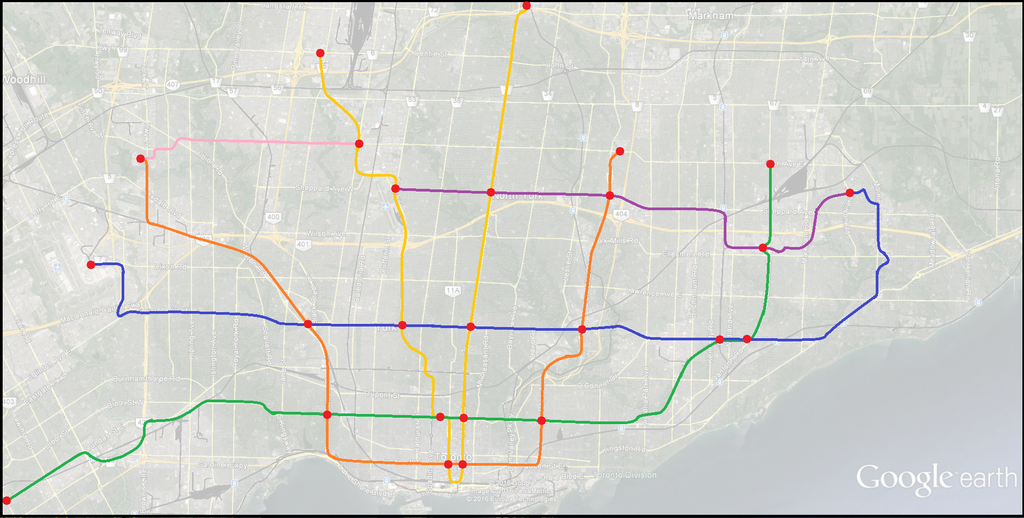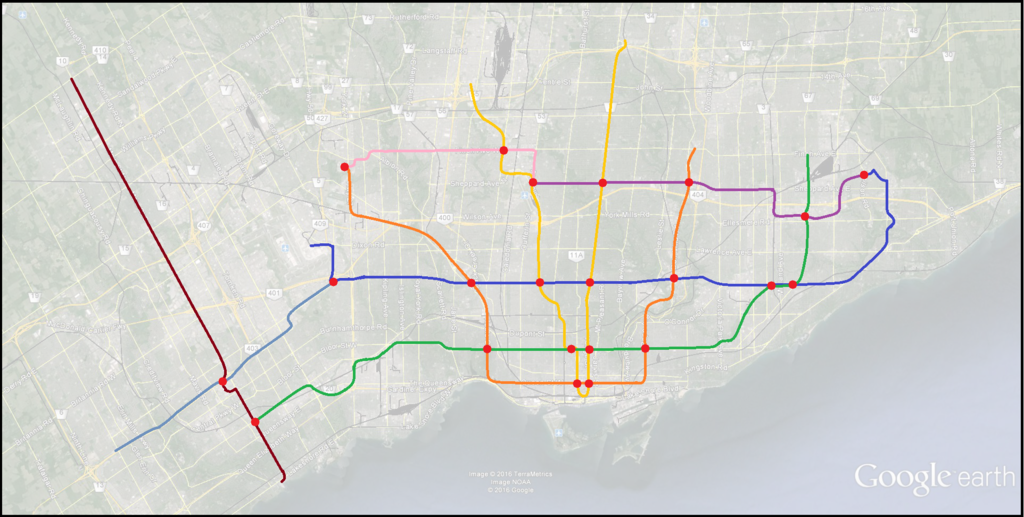Here's my short-term fantasy map for the track configuration in the Kitchener GO corridor. I think that to support increased local service, we need a flyover onto the Pearson Spur, which would help re-organize the tracks by speed and direction.
Currently trains operate in any direction on any track, though generally UP operates on the southern pair of tracks while GO and VIA operate on the northern. This is seriously problematic if we are serious about increasing the frequency and number of stops for local service, because having trains of different speeds sharing the same track significantly reduces capacity and service reliability. To some extent the current setup is of a "fast line" for UP and a "slow line" for everyone else. But UP "express" trains are actually a fair bit slower than GO Express and VIA trains, and that to use the fast line, GO and VIA must cross UP traffic at Pearson Junction. Furthermore, having two pairs of railways means that trains cannot switch between the fast and slow lines without interfering with traffic going the opposite direction.
A further issue with having UP trains on the south side is that the Union UP station is on the northernmost track. UP trains therefore need to cross all other Weston corridor services to serve it.
So I propose a unified 4-track railway sorted by speed and direction, with fast trains on the outside and slow trains on the inside. Having local trains in the centre allows them to turn back without interfering with express trains travelling further. This arrangement means that westbound UP trains don't need to cross any other Weston Corridor services. Eastbound UP trains still do, but this can be partly assisted by the existing USRC flyunder.
Based on the way the Pearson Spur currently weaves under the 427 and over Goreway Dr., it would be impractical to build a direct flyover.
Instead, the Pearson tracks would rise up onto an elevated structure east of the 427 to cross over the Weston Sub tracks. (
Shown at Carlingview)
Fortunately, this section of line has ample room, with the added bonus that there are no residential neighbours to complain about an elevated structure. (
Shown at Highway 27)
This configuration would involve the loss of the existing dedicated freight tracks, but I figure that we'd gain more than enough capacity to offset this.












